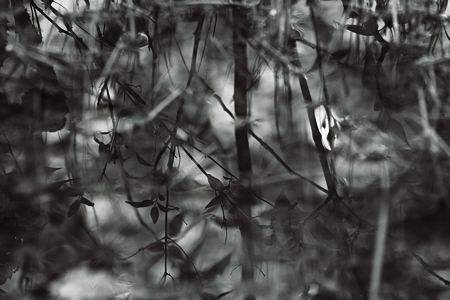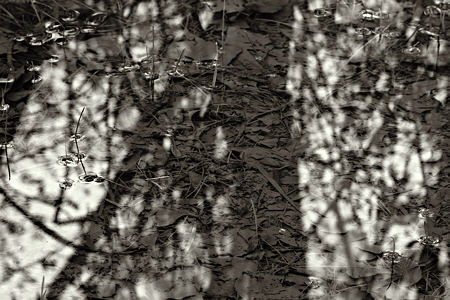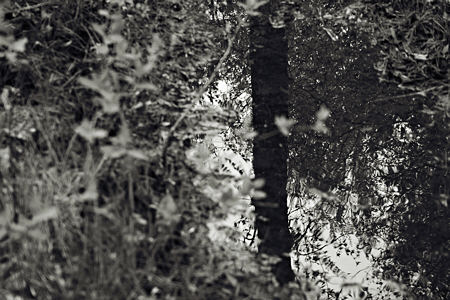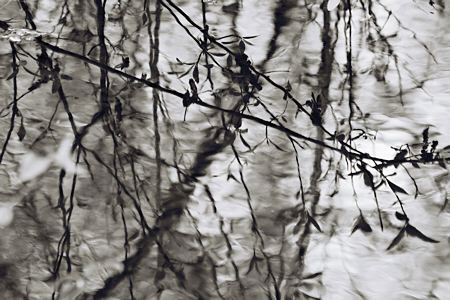May 31, 2008
The water has gone down, but some paths are still occupied by puddles or shallow streams, and the streams themselves are high, wide, and fast. I saw a duck trying to make its way upstream along the edge; it finally gave up, moved out from the bank, and shot downstream.
Though a problem for travel, the water is a photographic boon. In the previous post I showed a few photographs with varying location of the plane of focus relative to the surface of the water. This morning I carried out the experiment more systematically, changing only focal distance for a fixed camera position and aperture (f/9). In the sequence below, focus is at the puddle, at some nearby branches (as reflected), and at the far trees. This would best be presented as a slideshow; relationships among image elements would be more clear with in-place transitions. I’m currently looking into ways to provide that, and hope to update this post when I’ve learned how.



One thing has become more clear to me after today’s outing. I realized that what I find appealing about these images goes deeper than spooky focus play or surrealistic texture overlays. It’s the ability to superimpose layers that could be considered different worlds. Despite their proximity, the grass growing above the puddle, the dead leaves lying underwater, the low growth hovering nearby, and the high canopy beyond are in different microenvironments having quite different character. True, a simple wide-angle shot, aimed horizontally rather than downward, could take everything in and show it all at once in sharp detail. But juxtaposing rather than layering alters the effect altogether. The dreamy feeling might be entirely lost, and with it the drifting, contemplative mood I was in.
Filed in: Experiments
Comments closed
May 27, 2008
They said two days ago the rivers were cresting, but I’m sure the water was higher today yesterday. The flow must be at least 10 times what it was a week ago. At Limestone Creek the approach trail was under water. So was most of what I’m calling Limestone point, once I’d made my way there, feet still dry thanks to various trunks and branches that made serviceable (though slippery) boardwalks.
This whole neck of the woods had become a swamp, and delightful it was. The shallowest puddle has a reflective surface, and even a gray day—in fact, better a gray day—offers all sorts of visual play. The carpet of leaf litter was visible not in the light, but only in reflections too dark to show their source.

I was surprised by a patch of bright sky lying in the bend of an inundated path.

Intervening branches cross-hatched ghostly echoes in an overflow stream course.

The artistic significance of the water was the opportunity to explore the emotional influence of texture. Locating the focus at the water, beyond it at reflected elements, or before it at the nearest objects, allows manipulation of the viewer’s attention. Though technically similar to the depth of field experiment discussed before, there seems to be a difference in that those images were easy to read, appearing quite plausible even if slightly unusual. Reflections tend to be more of a surprise; we’re startled by some discrepancy and it takes us a moment to figure out the spatial relationships. The first impression can be surreal, like tree trunks with the texture of leaves, or a clear sky on a dirt path.
Is it always the unexpected that leads to new awareness? At any rate, I can say that the spots pictured above I will see differently from now on. They each have a memory attached that didn’t exist before, and wouldn’t now if I didn’t enjoy gray days and walking on logs, and if it hadn’t snowed and rained like it has here lately.
Filed in: Musings
Comments closed





